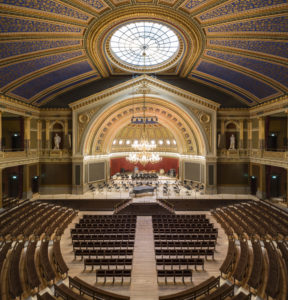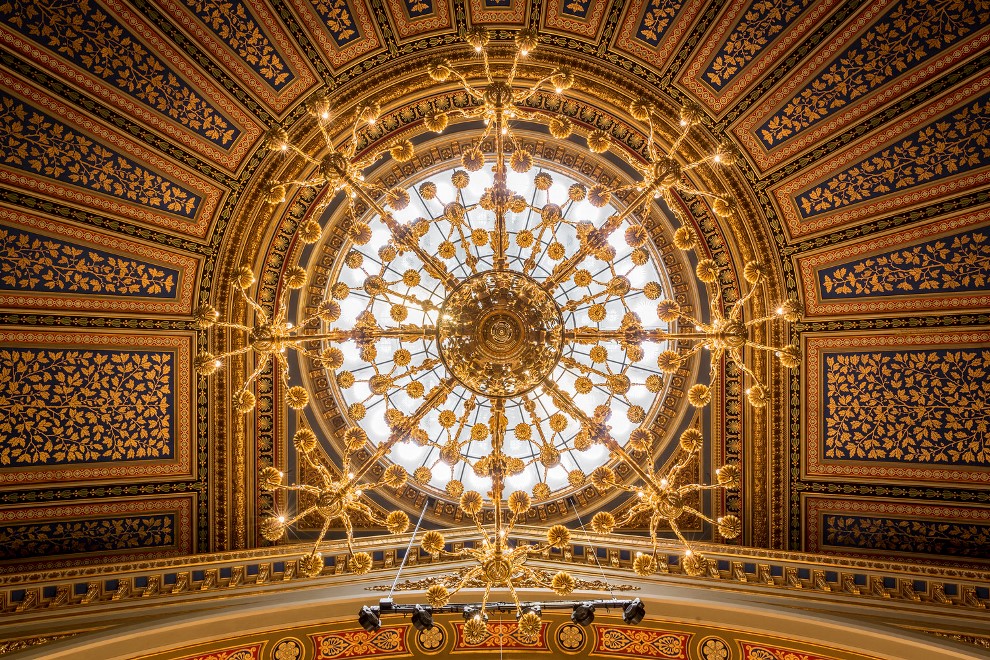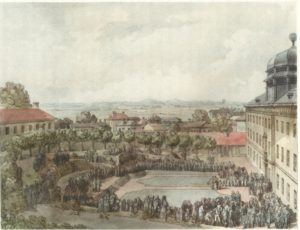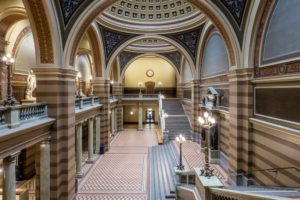In Uppsala, Sweden, the the oldest university in the country (in fact, the oldest among all Nordic nations) has been in operation since 1477. Uppsala University is a research university that consistently ranks as one of the 100 best universities in the world.
Uppsala belongs to the Coimbra Group of European universities and to the Guild of European Research-Intensive Universities.
They have nine faculties, with about 44,000 registered students. Approximately 2300 of them are doctoral students. About 28% of the 716 professors at the university are women.
Architecturally, Uppsala University has traditionally had a strong presence in the area around the cathedral on the western side of the River Fyris. Despite some more contemporary buildings further away from the center, the city’s historic center continues to be dominated by the university
The Uppsala University Main Building is a listed historic building, built between 1877 and 1887, and designed by Theodor Holmgren. It sits next to the Cathedral and the University’s first central building, the Gustavianum. It has now been beautifully restored by AIX Arkitekter.
The vestibule is one of Sweden’s most prominent space creations, crowned by three uniform glass domes. The semi-circular aula is the heart of the building and can hold up to 2000 people. There are also lecture halls and many other classrooms in the building.
The core activities—research and education—are ongoing in the renewed building, and its role as a collective point is strengthened by the restoration, even as the campus continues to sprawl outside the city.
AIX also worked with the conservation and restoration of stone details in the facades and some other minor adjustments that the large range of activities needs constantly. Technical equipment that is part of today’s needs has been inserted without damaging the overall impression and as far as possible without major intervention.
Maintenance has performed with traditional materials and methods. For example, the worn-out façade has been replaced in the traditional manner where serious damage has been found against new. Parts of minor and harmless damage have been saved to maintain the visual integrity of the building’s patina (there’s such a thing as too much restoration). The interior decorative paintings have been attached and taken by conservators. Mona Lantzourakis has been their conservation architect since 2012.
For saftey’s sake, AIX had to rebuild much of the wood flooring with new, more modern flooring technologies. A new reception and shop have been built in the hall. Acoustic measures have been implemented in aula and in the lecture halls, integrated into artistic ornaments. In the design, models and practical tests have been used as widely as possible. For example, a test room in a classroom has been built and door automation tested on an existing door pair.
 To improve accessibility, a number of measures were implemented. At the aula, the scene has been made accessible through a new platform and rebuilding of the scoreboard. A large number of doors have been rebuilt, either by moving fittings or by completing them with electrical contacts.
To improve accessibility, a number of measures were implemented. At the aula, the scene has been made accessible through a new platform and rebuilding of the scoreboard. A large number of doors have been rebuilt, either by moving fittings or by completing them with electrical contacts.
A visually-impressive entrance has now been created on the front of the building. The lighting has been supplemented with new light sources, or switched to modern ones, in order to increase lighting levels. The rails have been rebuilt and supplemented. Stairs have been completed with contrast markings.
New signs and information boards welcome visitors. All the electrical system and AV-system has been renewed and improved. New fire safety equipment has been integrated into the architecture. A new fire-resistant wardrobe has been built to reduce fire stress. Many existing doors have been retained by fire protection measures and provided with intumescent seals.
As the photos show, this is a restoration for the ages!
All photos courtesy of AIX Arkitekter. Featured photo shows the restored chandlier in the Aula.




